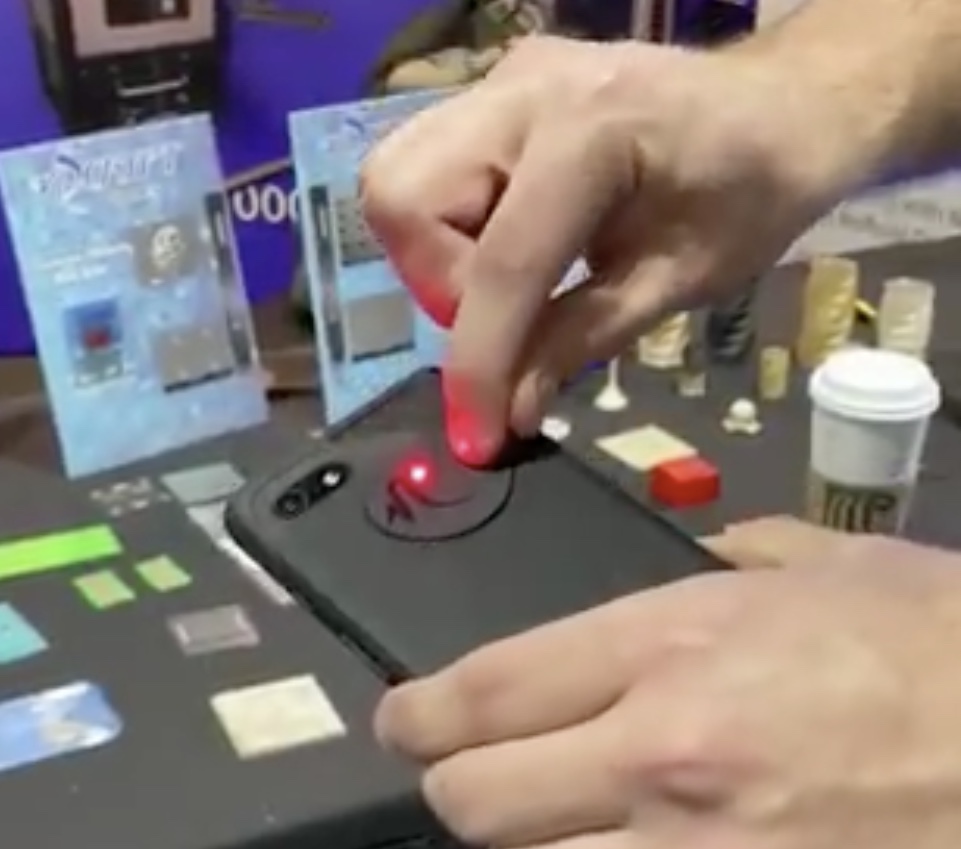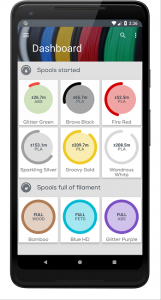 Two years ago, Android software engineer and OctoPrint fan Anthony Stephan, who’s based out of France, developed an Android app for OctoPrint called Printoid that provides direct access to the OctoPrint server and has features such as video streaming and a 3D visualizer for G-code and STL files. Now, Stephan is back with a new project – RollingUp, an Android app that can help you more efficiently manage your 3D printing filament spools. The app, which aims to make life easier for makers, was launched about a month ago, and Stephan tells us that since then, over 2,000 users have joined the RollingUp community and “are very happy with the app.”
Two years ago, Android software engineer and OctoPrint fan Anthony Stephan, who’s based out of France, developed an Android app for OctoPrint called Printoid that provides direct access to the OctoPrint server and has features such as video streaming and a 3D visualizer for G-code and STL files. Now, Stephan is back with a new project – RollingUp, an Android app that can help you more efficiently manage your 3D printing filament spools. The app, which aims to make life easier for makers, was launched about a month ago, and Stephan tells us that since then, over 2,000 users have joined the RollingUp community and “are very happy with the app.”
As he explained to 3DPrint.com, Stephan decided to make the RollingUp app for three reasons:
“firstly, I have a personal stock 50+ spools, and it is pretty hard to know how much filament I still have in this spool or this one. I maintained an Excel sheet with the input information each time I had to use a spool, but most of time I forgot to do this, and I had to power-on my computer…
“secondly, I am working with a pro here in France, who has also a high stock of spools (200+). And he needed a tool to manage his stock too.
“finally, there was no good tool to do this yet. Because the Printoid users was requesting me this feature since a while, I though that it was a good idea to provide a standalone tool for everybody!”
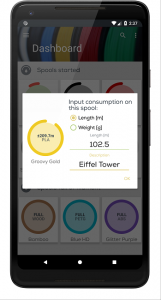 The RollingUp app is a 3D printer filament spool manager, which lets you easily add your spools to the app and input their usage. The app is only available on Google Play for now, though the iOS version is currently under development and should be available soon on the Apple Store.
The RollingUp app is a 3D printer filament spool manager, which lets you easily add your spools to the app and input their usage. The app is only available on Google Play for now, though the iOS version is currently under development and should be available soon on the Apple Store.
In terms of making money, Stephan told us that the app does contain small advertisement banners, though these only show up for those who use the free version to manage just two spools of filament. The $4.99 Premium plan, accessible from an in-app purchase, doesn’t include any ads and lets you add and manage as many spools as you want.
When asked who he made the RollingUp app for, Stephan told us:
“For every makers/printers who want to track his own filament consumption. It is also a good start to make the makers/printers aware of the consumption of plastics / bio-plastics. I am currently working on new screens to display statistics to the users about their habits: how much ABS are you using against PLA? How much filament do you put in the trash? These informations will be available very soon, and I hope that we all will contribute to change our mind about the 3D printing universe: we can do amazing things, be we also have to think about our environment.”
Users can synchronize the app on multiple devices, as well as access its spools shop to get great deals on filament.
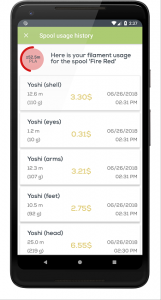 Stephan told 3DPrint.com, “I let the users filling their spool information by themself. But I am currently working with Filament.Directory, a huge spool database. They will provide me API in the next weeks to connect RollingUp with their database: users will be able to select their spools in a list instead of creating it by themself, and will also have an access to two kind of information: the best parameters provided by the manufacturer of the filament, and the best parameters observed by the users. Filament.Directory already work a lot on these informations, and it would be amazing to provide them in RollingUp.”
Stephan told 3DPrint.com, “I let the users filling their spool information by themself. But I am currently working with Filament.Directory, a huge spool database. They will provide me API in the next weeks to connect RollingUp with their database: users will be able to select their spools in a list instead of creating it by themself, and will also have an access to two kind of information: the best parameters provided by the manufacturer of the filament, and the best parameters observed by the users. Filament.Directory already work a lot on these informations, and it would be amazing to provide them in RollingUp.”
The app cannot currently be used to share pictures of your 3D prints, but Stephan has said he may think about adding a social media function to the next version of RollingUp. But the app has all sorts of other great features, including:
- Easy management of your stock and various materials parameters
- Spool consumption cost and input
- Verify if a spool has enough filament left for a specific print job
“Very soon I will introduce new features, first in order to sensitise the users about eco-responsibility in the 3D printing world, and secondly to bind the app with the Filament.directory database (in order to create automatically spools in the app according existing spools on the market),” Stephan told us.
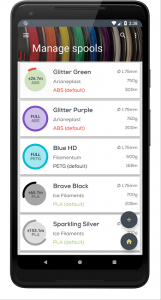
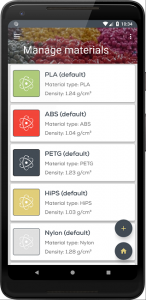
The app also lets users sort their filament spools by weight, material, and manufacturer, and, if you have the Premium version, access a special NFC tag-writing feature. This feature allows you to write out your spools on NFC tags, then access their status by scanning the spool with your Android device.
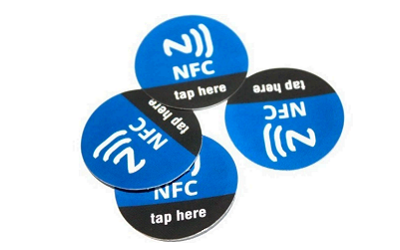
To take advantage of this feature, you first have to create your spool in the app. This is easy to do if you already use Printoid for OctoPrint – just choose a file in the file manager, then click the RollingUp icon to send its length and weight (in meters and grams) to the app, or directly input this information by clicking on the file name from the dashboard. Label the input and then open the ‘NFC Tags’ menu and click the ‘write’ button. Choose your spool, add your device to the tags, and voila! You can now stick the tags right on your spools.
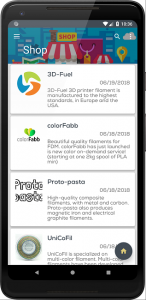 One swift click on the spool in your app’s dashboard lets you input consumption, while a longer click will pull up its consumption history. A cost manager feature also shows how much money you’ve spent on each print.
One swift click on the spool in your app’s dashboard lets you input consumption, while a longer click will pull up its consumption history. A cost manager feature also shows how much money you’ve spent on each print.
In terms of crowdsource settings, Stephan explained to us that users will have the best settings for their own spools in the app, and will be able to contribute to the Filament.Directory database.
When asked by 3DPrint.com what he hoped to achieve with RollingUp, Stephan answered,
“Actually, I hope that the user base will grow a lot. Then, with the new features, for example the integration of the data from Filament.Directory, I hope that we will be able to improve a lot the best parameters information found in this website. Also, since users can create new spools in RollingUp, it’s also a good way to be informed about new spools on the market, which are the best parameters, etc. and so, feed the Filament.Directory database. This database is amazing and deserve to grow quickly, with the help of every makers/printers!
“Moreover, with RollingUp, I really want to give super-powers to the 3D printers and their spools. The NFC feature, for example, is easy to use, but very impressive and convenient!”
Will you try out the RollingUp app? Let us know! Discuss this and other 3D printing topics at 3DPrintBoard.com or share your thoughts in the comments below.
[Images provided by Anthony Stephan]


